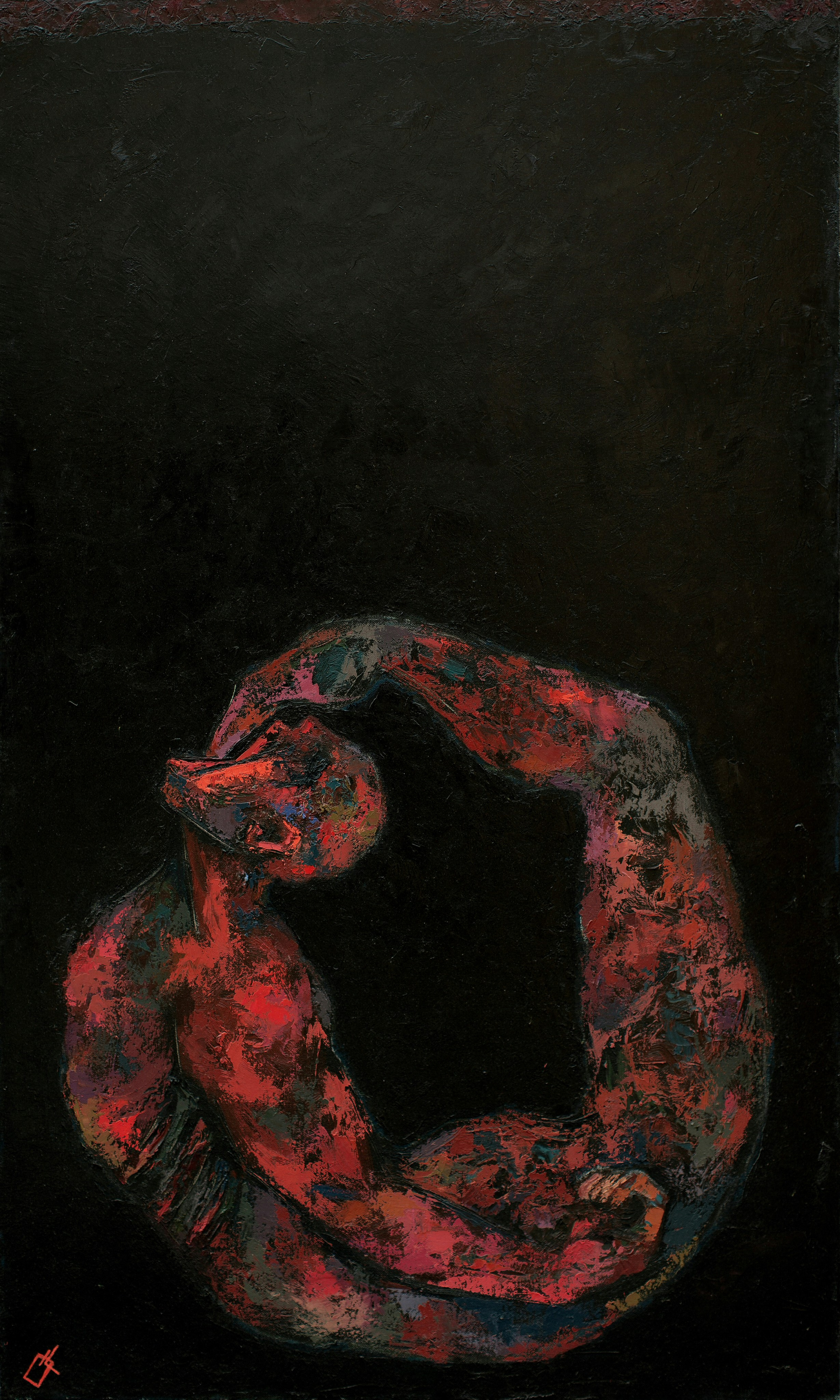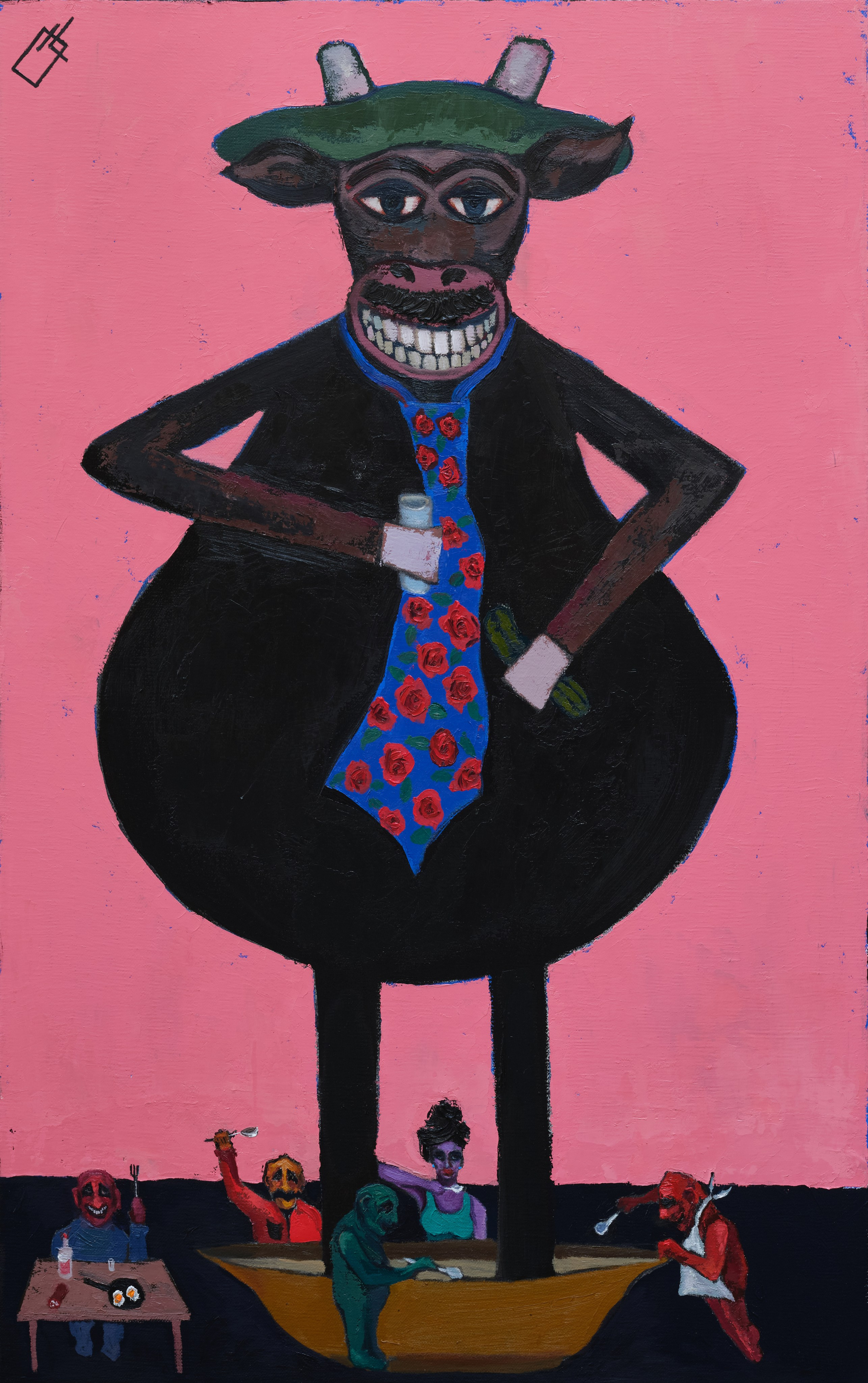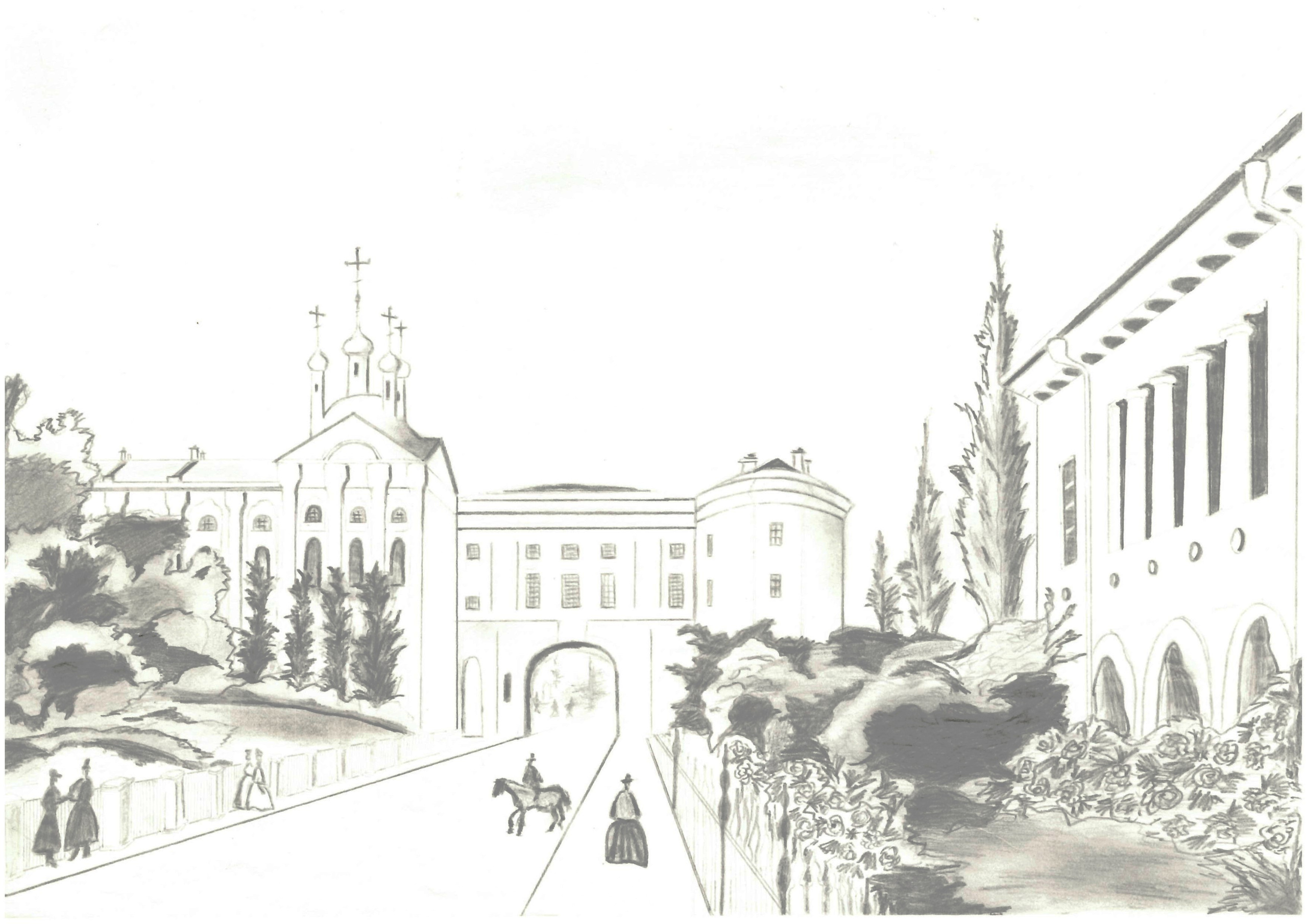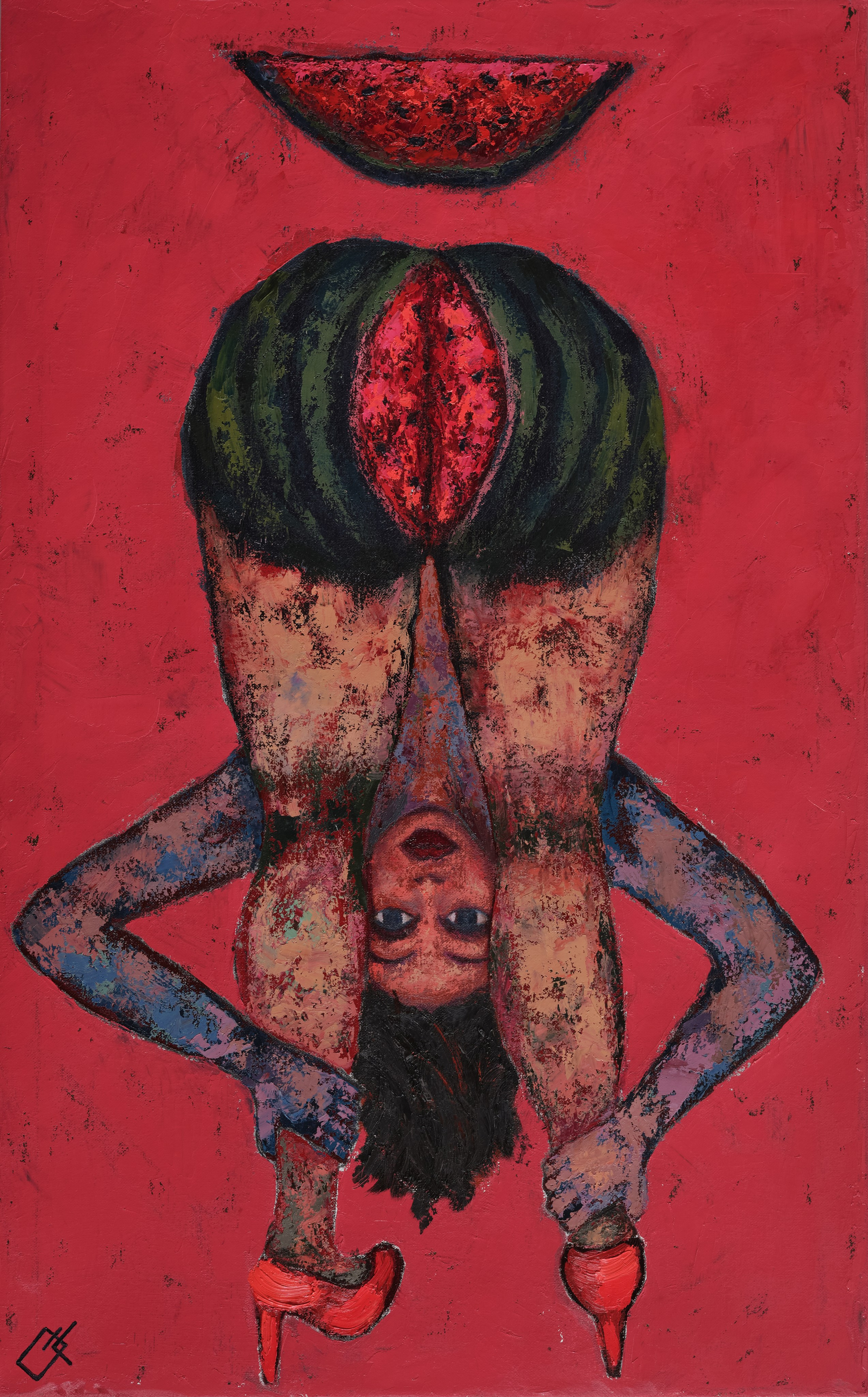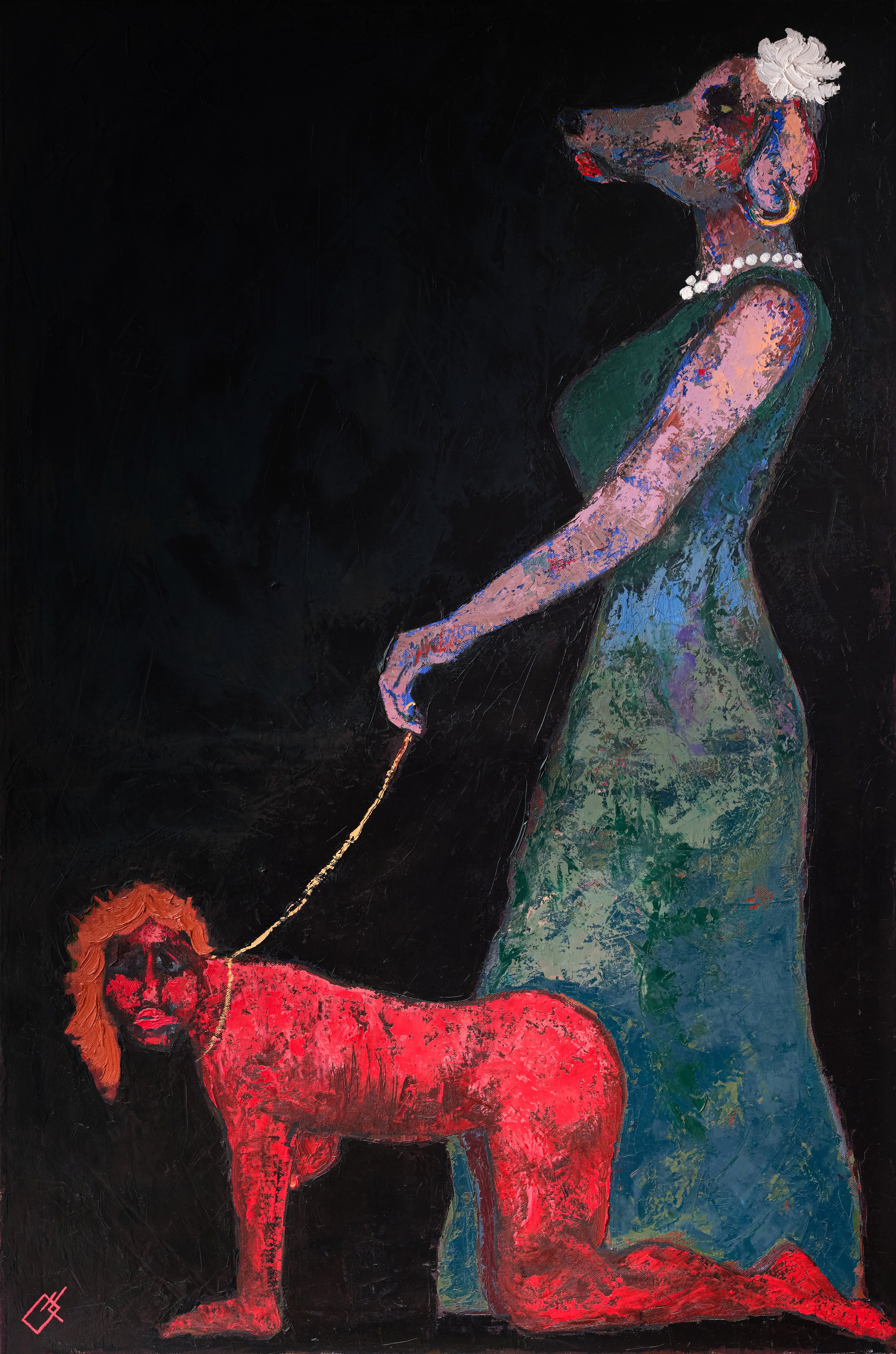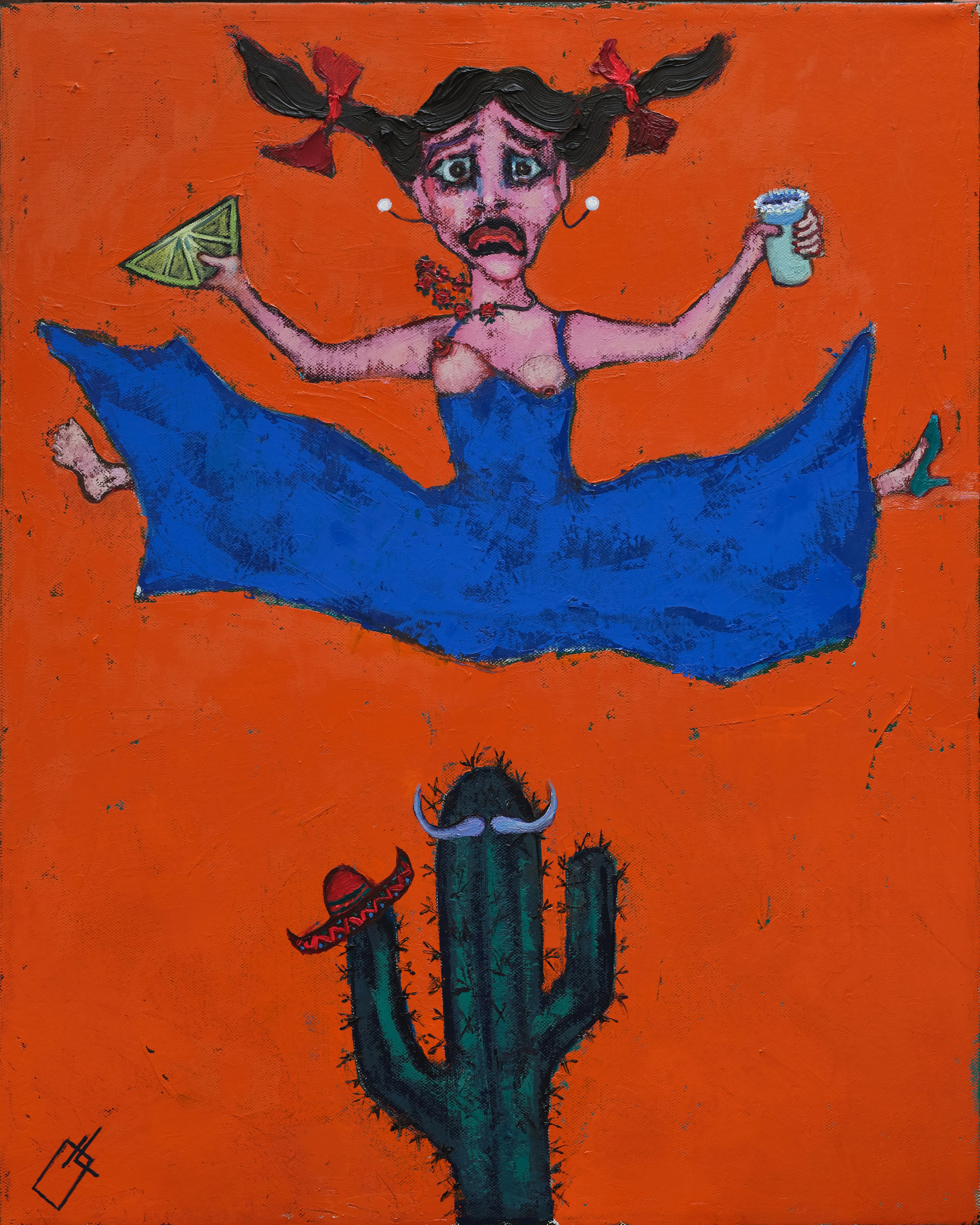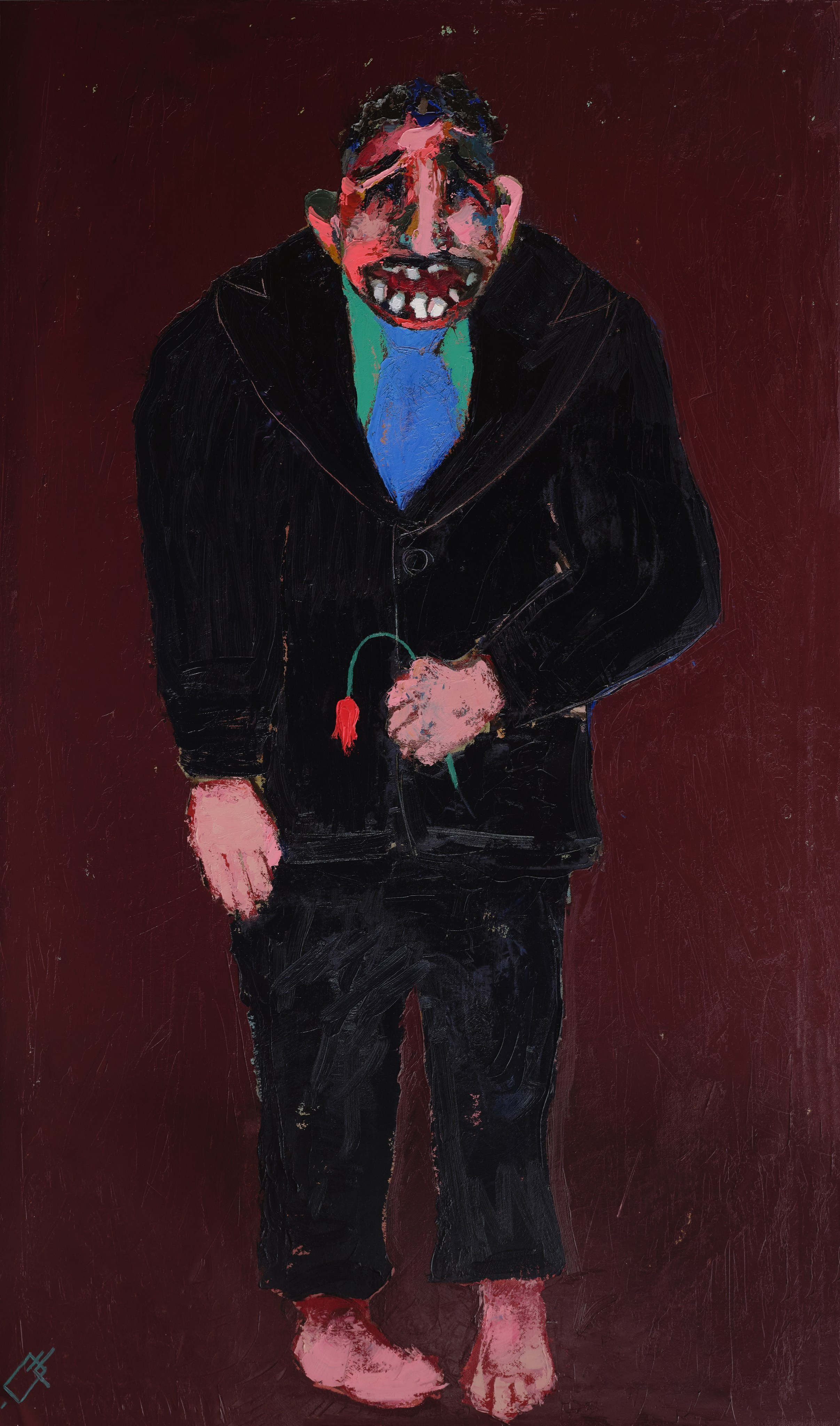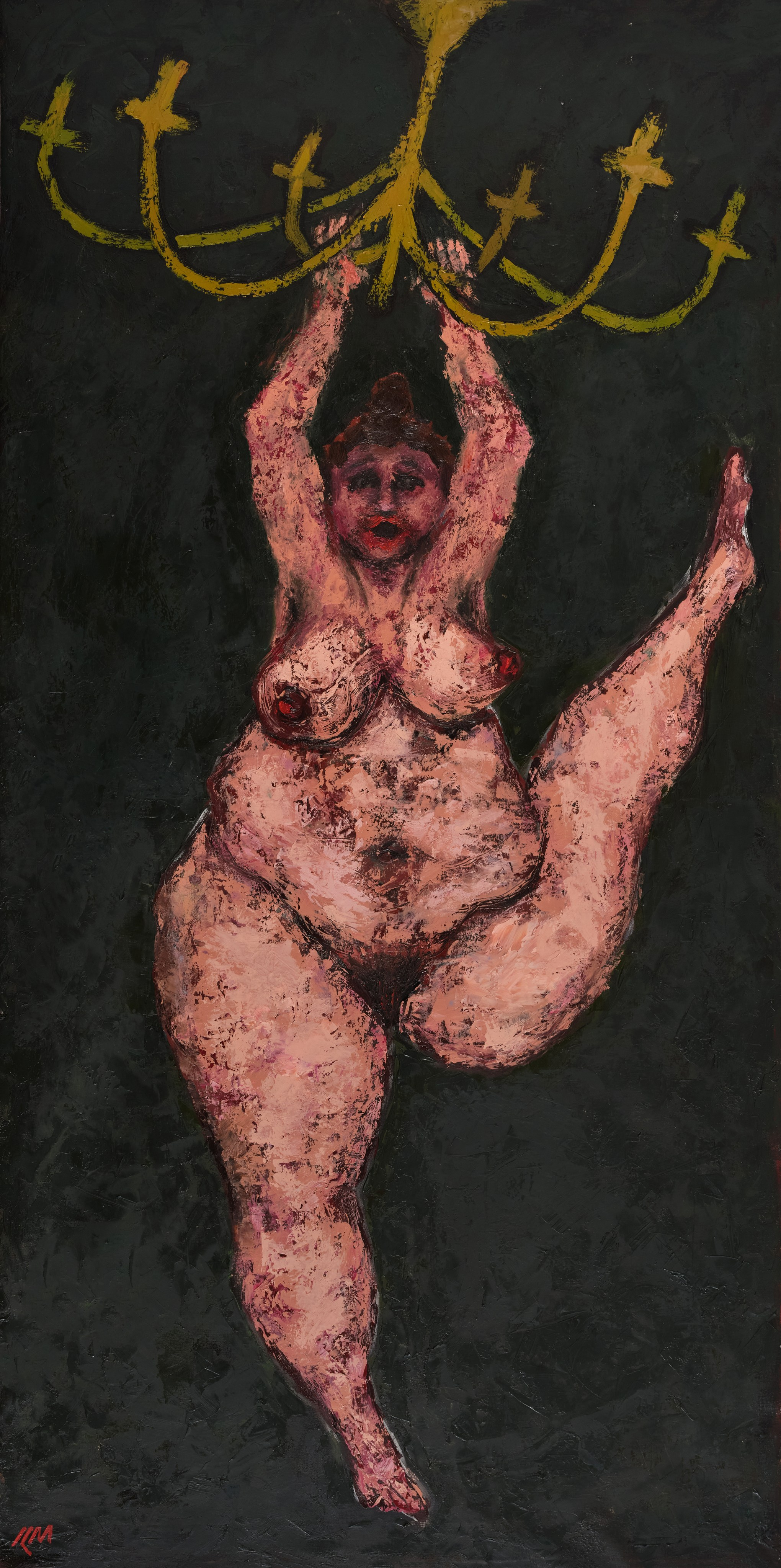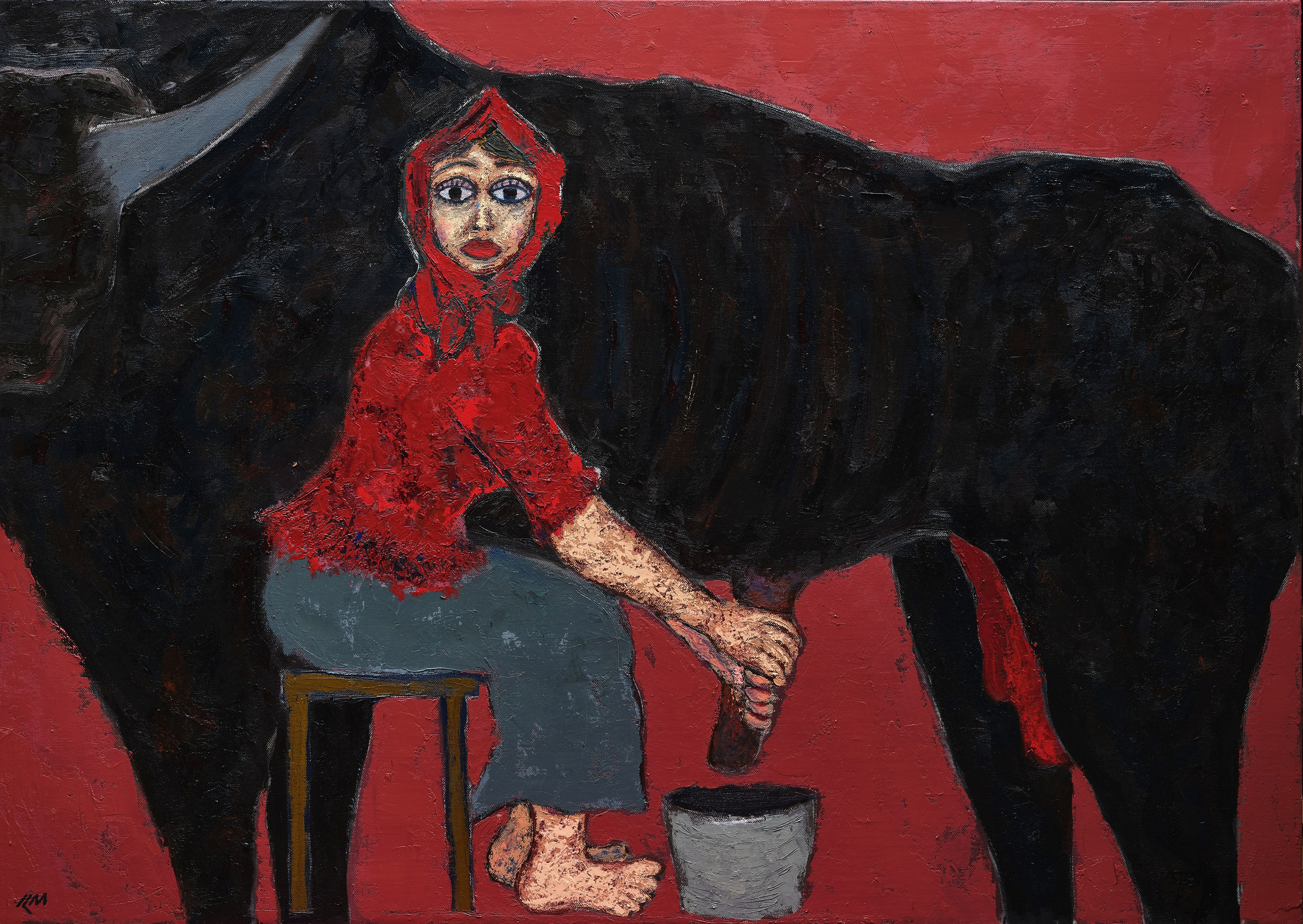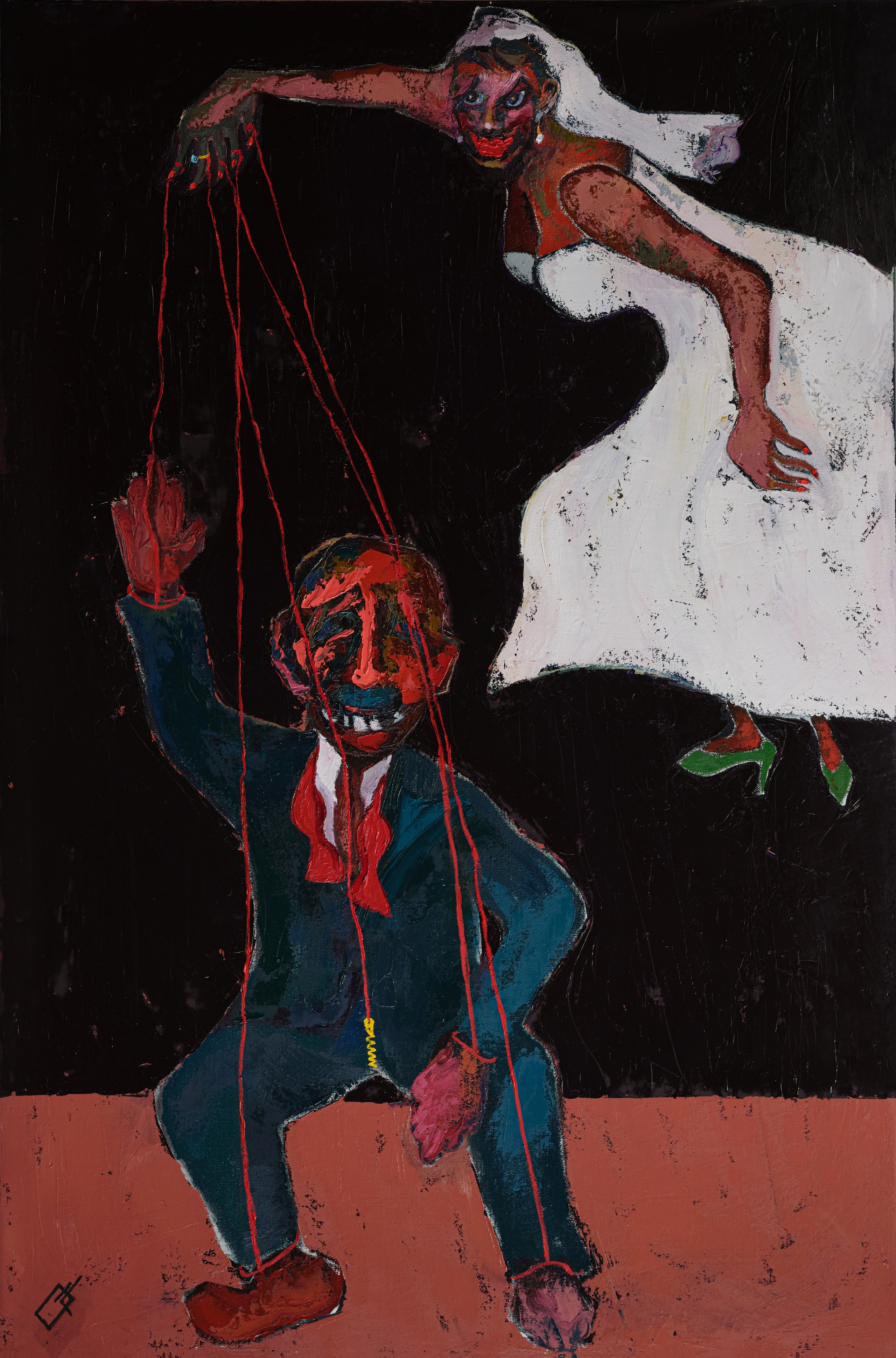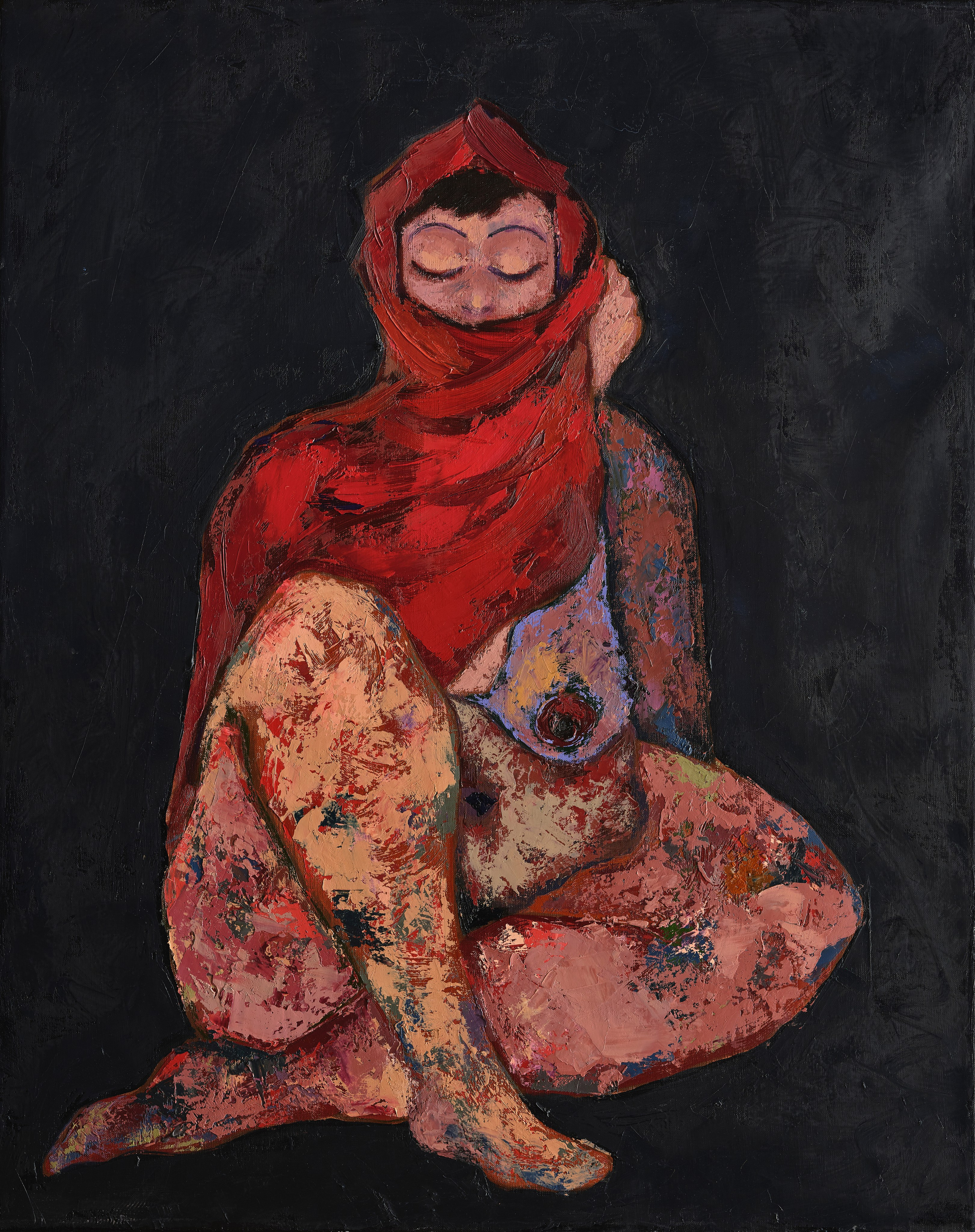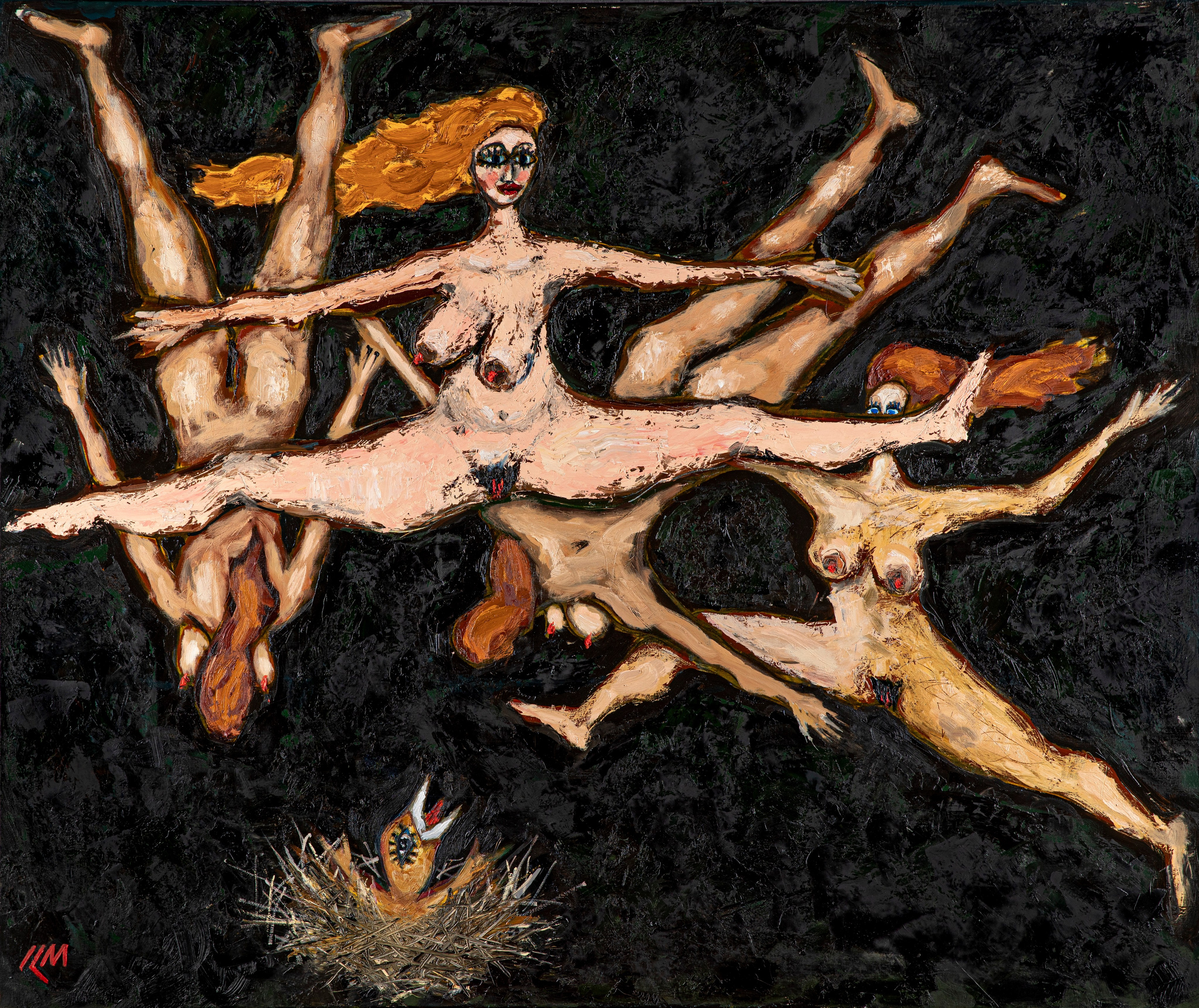PEDICURE
Medium Oil
Canvas Linen
Date 2024
Dimensions 180 × 120 cm
Edition 1/1
- Artwork provided with certificate of authenticity, signed by Kamran Mammadov
Pedicure
The painting “Pedicure” is a vivid and symbolic portrayal of the struggles within a marital relationship, particularly the burdens placed on the husband in the face of relentless demands and expectations from his wife. Through surreal imagery, bold colors, and exaggerated elements, the artist masterfully conveys themes of imbalance, sacrifice, and dissatisfaction.
The Husband’s Struggles:
The man, dressed in a suit, represents the archetype of a hard-working provider. His slightly loosened tie reflects his attempt to find small moments of comfort amid relentless demands. Despite his formal attire and professional responsibilities, his life is portrayed as chaotic and overwhelming:
- The roller skates on his feet indicate the frantic pace at which he operates, his constant need to move quickly juggling multiple responsibilities, and metaphorically “running” to meet every need.
- The foot soaking in a bucket of hot water signifies his physical exhaustion and illness. Even in illness, trying to recover or find some relief, he cannot afford to stop, continuing to work and fulfill the demands placed upon him.
- The pedicure he performs for the bride with his right hand is a striking representation of his self-sacrifice. Even amidst all his efforts, he continues to cater to her comfort and personal needs, symbolizing his role as both provider and caregiver and relentless effort to satisfy her.
- The rose in his left hand embodies his emotional labor. It symbolizes his love and care, as he still offers romantic gestures in hopes of bringing happiness to his wife. This flower, held alongside his other burdens, emphasizes his desire to meet both her material and emotional needs and bring happiness.
Despite his visible exhaustion and efforts, the man’s posture and expression reflect a sense of defeat, showing that his sacrifices are not acknowledged or reciprocated.
The Bride’s Role and Emotions:
The bride, physically seated on the man’s shoulders, symbolizes the weight of her expectations and demands. Her posture and expression are central to understanding her emotional state and role in the dynamic:
- Her greenish skin tone gives her an alien, otherworldly, or unnatural quality, suggesting she is not merely an individual but a representation of broader societal pressures, expectations, or ideals that weigh down the husband. This artistic choice elevates her beyond a single character, turning her into a symbol of unrelenting demands placed on a partner in a marriage.
- Her posture and expression convey entitlement, dissatisfaction, and simmering anger. Her confident pose suggests she is in control. Despite the husband’s endless sacrifices, she remains unfulfilled, her body language reflecting scrutiny and frustration.
- Her hand reaching toward the rose that she is not only dissatisfied with the comfort and effort he provides but also expects more from him, emotionally along with insatiable expectations. Despite the man’s gestures of love and sacrifice, she remains unsatisfied and critical, further intensifying the emotional strain.
Symbolism of the Bold Bordo Background:
The deep and bold bordo color that dominates the painting is integral to its emotional intensity:
- The hot and oppressive tone of the color evokes an environment of constant pressure, discomfort, and tension. It creates a stifling atmosphere where the struggles of the man and the dissatisfaction of the woman unfold.
- The rich bordo further symbolizes the emotional heat and intensity of their relationship, where passion has been replaced by conflict and frustration. It amplifies the sense of urgency, exhaustion, and imbalance in the dynamic.
Overall Themes and Message:
“Pedicure” delves deeply into the struggles of a post-marriage relationship, exploring themes of emotional labor, unreciprocated efforts, and the imbalance of responsibilities. The painting portrays:
- The husband’s relentless sacrifices, symbolizing his attempts to meet every need despite his exhaustion, illness, and emotional strain.
- The wife’s dissatisfaction, representing unfulfilled expectations and a broader critique of the disconnect that can occur when efforts go unrecognized or are perceived as insufficient.
- The alien-like appearance of the bride, which expands the narrative to represent societal expectations and unattainable ideals rather than a single individual.
- The bordo background, creating a stifling and uncomfortable environment that reflects the emotional heat and pressure under which this dynamic plays out.
- The contrasting emotions between the husband’s exhaustion and the wife’s dissatisfaction highlight the emotional disconnect and imbalance often found in relationships where one partner bears the majority of the labor—both physical and emotional.
Through its surreal imagery and symbolic details, the painting provides a poignant commentary on the burdens of marriage, the complexities of emotional labor, and the cycle of dissatisfaction and sacrifice. It captures the unspoken struggles of a relationship where one partner bears the weight of both love and obligation, while the other remains distant, demanding, and ultimately unfulfilled.



